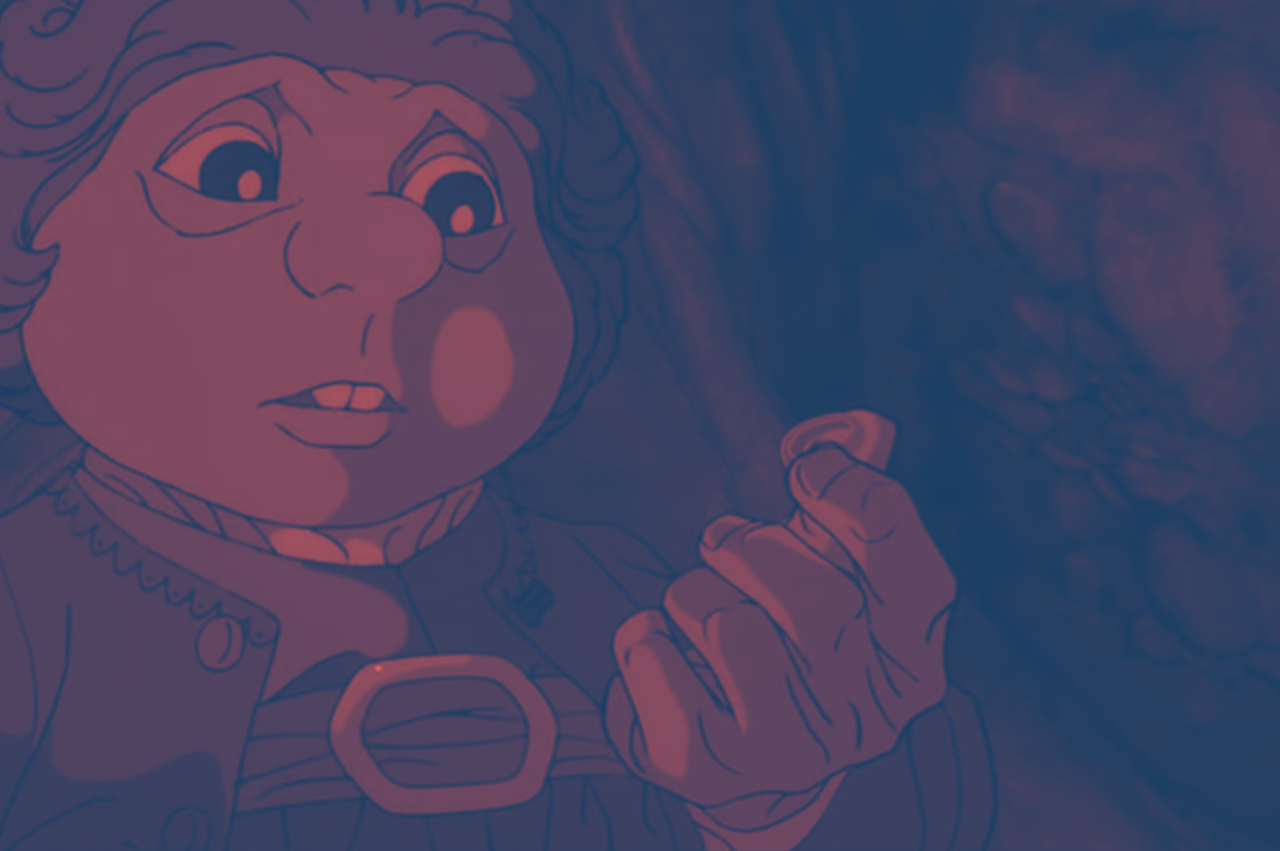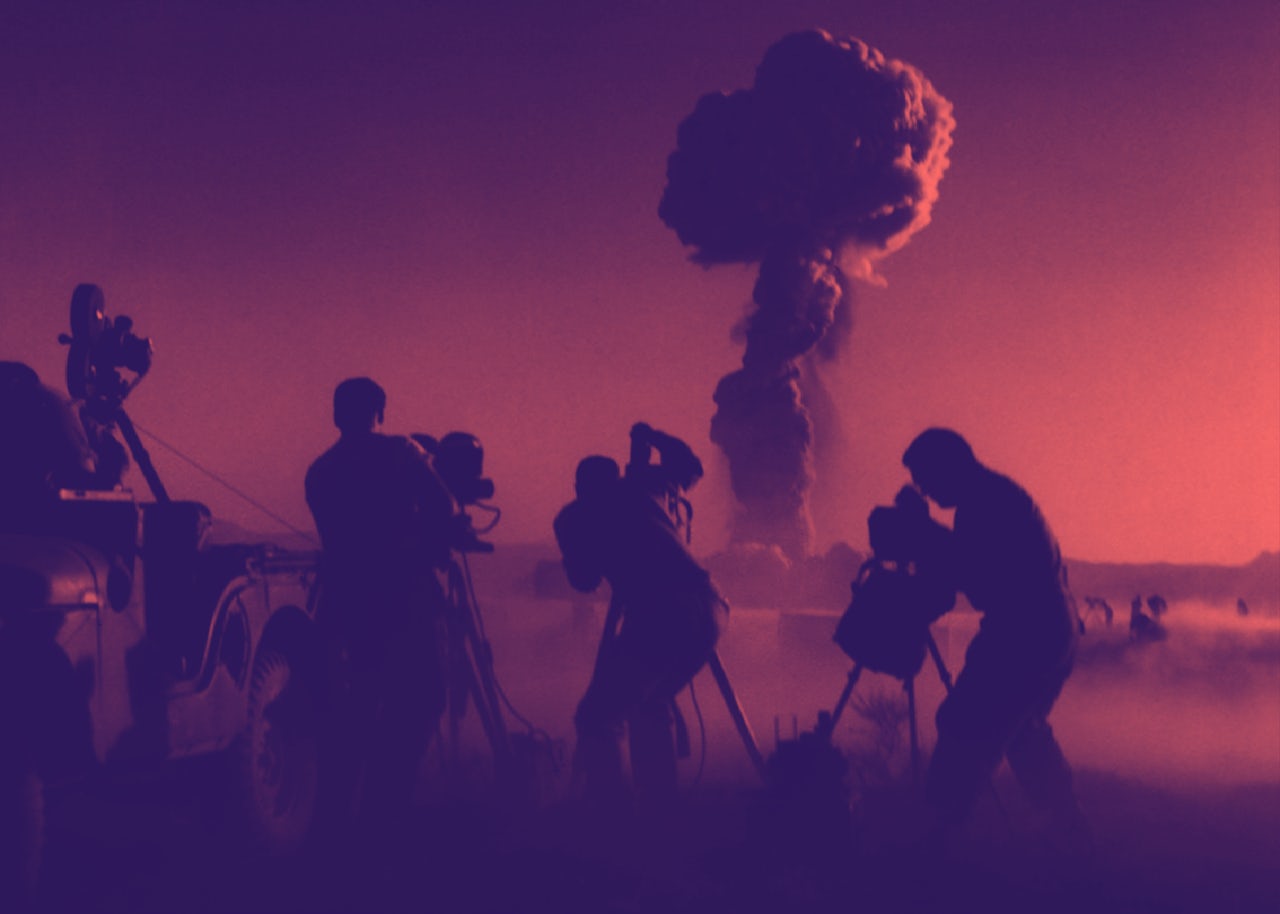Long before Peter Jackson and New Line Cinema had a chokehold on J.R.R. Tolkien's The Lord of the Rings series, a range of filmmakers, animators, stage play directors, and radio show producers had the opportunity to reimagine the much-beloved books. While a proposed Stanley Kubrick-helmed movie starring the Beatles petered out, three English-language cinematic adaptations were released in the United States. The best was Ralph Bakshi’s rotoscoped and occasionally ridiculed The Lord of the Rings, which hit theaters in 1978. The film by the Fritz the Cat director was a box office success, bringing in $30 million gross U.S. sales in 1979 on an $8 million budget, and it remains a love-it-or-hate-it cult classic today.
The other adaptations — The Hobbit and The Return of the King, both directed by Jules Bass and Arthur Rankin Jr. for release on television in 1977 and 1980 — have gotten much less attention as predecessors to Jackson’s film. Partially that’s because the tone and conception of the films feels the furthest from Tolkien's books, as they were made for a more family-friendly audience. (At least Rankin insisted that everything in The Hobbit originated from the books.) There’s nothing scary about them, and a large part of the story is told through a number of ridiculous folk songs that take quite a bit of drama and tension away from the plot. More than anything, few people still talk about the films because they are just so numbingly bland.
Today, the Rankin/Bass production team is best known for its feel-good TV Christmas specials, like the stop-motion children’s classics Rudolph the Red-Nosed Reindeer (1964), The Little Drummer Boy (1968), and The Year Without a Santa Claus (1974). Rankin and Bass, who worked in conjunction with Japanese animation studios, were the first to successfully adapt Tolkien's books for television or film. By the time The Hobbit aired in 1977, Bakshi had already spent three years creating his Tolkien adaptation based on The Fellowship of the Ring and The Two Towers, the first two installments in the the three-part The Lord of the Rings book series. Bakshi had intended to film a sequel to his movie, but it never materialized due to a lack of financing. Rankin/Bass told The New York Times they always intended to make a sequel to their The Hobbit that covered the ground of the third Lord of the Rings book, though Tolkien scholars note were only able to commit after Bakshi's funding fell through. For The Return of the King, Rankin/Bass created a framing device that would tie it with their first film, a choice that had the benefit of avoiding much of the narrative ground Bakshi covered.
The Rankin/Bass The Return of the King begins after the fellowship has already destroyed the ring. Hobbit protagonist Bilbo Baggins, being a weary 129 years old, doesn’t remember what happened to the ring, and so the story of Tolkien's third book has to be recounted via the Minstrel of Gondor, played by folk singer Glenn Yarbrough, who coos and strums the folklore into precious life. From there, the Minstrel and Gandalf take viewers into the past events, alternating between the Minstrel’s songs and Gandalf’s spoken narration. The events of The Hobbit and the first two books are glossed over, bringing viewers all the way up to Samwise Gamgee carrying the ring as he seeks to rescue the imperiled Frodo Baggins from Mordor.
Hear clips from The Return of the King on our daily podcast, The Outline World Dispatch. Subscribe on Apple Podcasts or wherever you listen.
In the Rankin/Bass Tolkien universe, the stakes are particularly miniscule. Yes, there’s trouble in Middle Earth, and yes, the hobbits and their fellow good guys have to undertake an epic journey to save their world as they know it from the ravages of pure evil. But from the hokey soundtrack to the flat characters, there’s much drama lost in The Return of the King. Yarborough’s voice periodically reappears to sing Cat Stevens-esque melodies with lyrics like “Less can be more/and small can be beautiful/for life isn’t all/just big and wonderful,” heard as Sam makes his way to Mount Doom and reminisces about life back in the Shire. (Though, full-disclosure, as I type, that mind-numbingly pleasant song has been stuck in my head for at least an hour.) Some moments that are supposed to be thrilling end up stunted by the characters’ kid-friendly simplifications: When Eowyn confronts the Dwimmerlaik, a dragon-riding ringwraith, the entire scene is made hilarious by his cartoonish voice, which sounds something like Disney’s Captain Hook speaking through a metal box fan.
In what I can only imagine was an effort to tone down the darkness of the books, horrifying characters like Gollum, the orcs, and the ringwraiths look like frogs and skeletons rather than creatures from a foreign world, as they are in Bakshi’s and Jackson’s interpretations. The story’s most dramatic moment — Sam and Frodo being saved from Mount Doom by the Great Eagle — is ultimately undercut by the story-within-a-story framing that filmmakers felt was necessary to keep the film connected more to their previous work than Bakshi’s adaptation.
Of the few pre-Jackson Lord of the Rings adaptations that there are, the Rankin/Bass versions are undoubtedly the most disappointing. (Tolkien was notoriously critical of adaptations of his book. In a 1955 letter to a friend, Tolkien wrote of a BBC radio adaptation: “I think the book quite unsuitable for ‘dramatization’, and have not enjoyed the broadcasts — though they have improved.”) The Rankin/Bass cartoons aren’t unwatchable; I imagine they were very entertaining to young children or stoned adults. But compared to Bakshi’s (and, necessarily, Jackson’s) they do the most disservice to the haunting, doom-laden atmosphere of the world that Tolkien created. The soft, watercolor landscapes suit a children’s movie well, but combined with the one-dimensional heroes make for a film that feels more glazed over than epic. “…this two hour travesty of the work of J.R.R. Tolkien is not much better than the dimwitted, barely animated ducks, mice, pics and assorted fauna that are inflicted on kids Saturday mornings while their parents try to grab an extra hour of sleep,” wrote critic Joseph McLellan of the Washington Post in an article found on Nexis. Meanwhile, a Los Angeles Times reader wrote to the paper’s “Viewers’ Views” section (also found on Nexis): “I have just finished vomiting over ‘The Return of the King’ on ABC…I only feel sorry for those who were subjected to this unfortunate display before they had a chance to read the book; it has been all but ruined for them."
Still, both the Rankin/Bass and Bakshi versions are inherently interesting to watch from the present, where Tolkien’s story is totally monopolized by Jackson’s interpretation. They’re decidedly less lore-heavy, lending themselves to the standalone, truncated presentation. Released before the days of endless sequels and infinitely-expanding franchises, they don’t even attempt to feed us information for use in future movies. You can simply sit down and press play, while watching even one of Jackson’s adaptations—especially one of the extended editions—is a full commitment. The combined runtime of Rankin/Bass’s The Hobbit and The Return of the King and Bakshi’s The Lord of the Rings is just over five hours. Meanwhile, the standard versions of Jackson’s first three Tolkien films takes almost nine hours to complete, and that’s not even including his eight-hour Hobbit trilogy.
Both pre-Jackson's adaptation teams were pioneers in their own right. In making The Lord of the Rings, Bakshi became the first person to rotoscope an entire film. The almost collage-like effect of the style created a Middle Earth that was as visually compelling as it was unsettling, a perfect combination for Tolkien’s stories. Meanwhile, Rankin and Bass poured significant resources into their films: When The Hobbit aired on NBC in 1977, the New York Times reported the $3 million production was the priciest animated TV production ever, coming at a time when studios and networks were only beginning to make bigger investments in dedicated children’s television.
For Jackson and others of his generation, Bakshi’s adaptation was the original visual representation of J.R.R. Tolkien's widely beloved book series. For everyone born since then, Jackson and New Line Cinema’s conception of the Lord of the Rings characters, the look of the universe, and even how the books sound is nearly inseparable from the original stories. It’s not necessarily a bad thing. That’s just the power of a movie that popular; it can forever eclipse the original story, especially as reading rates plunge. (If you want to set off a Tolkien aficionado, plead ignorance to the existence of Tom Bombadil.)
On Monday, New Line Cinema's grip on the Lord of the Rings aesthetic grew a little tighter with the news that Amazon acquired rights to the book series in a nearly $250 million deal with New Line Cinema, HarperCollins, and the Tolkien estate. Joining the Lord of the Rings entertainment franchise, which includes three Lord of the Rings films and three The Hobbit films, will be Amazon’s multi-season series focusing on what happened in Middle Earth before The Fellowship of the Ring. According to Deadline Hollywood’s Nellie Andreeva, the deal includes some “creative restrictions” for what can and can’t be done in the series.
What that even means is still a mystery. Considering how much money Amazon spent on the rights alone, the success of Jackson and New Line’s adaptations, and the success of the competition — HBO’s stylistically comparable, high fantasy series Game of Thrones — one of the biggest (and riskiest) surprises the Amazon series could throw viewers’ way would be a complete stylistic departure from Jackson’s hyperrealism and context-heavy approach. With so much money and Amazon’s reputation as a streaming service on the line, I’d say it’s highly unlikely. But anyone with a spare afternoon might want to revisit one of the only — and potentially the last — alternatives.

